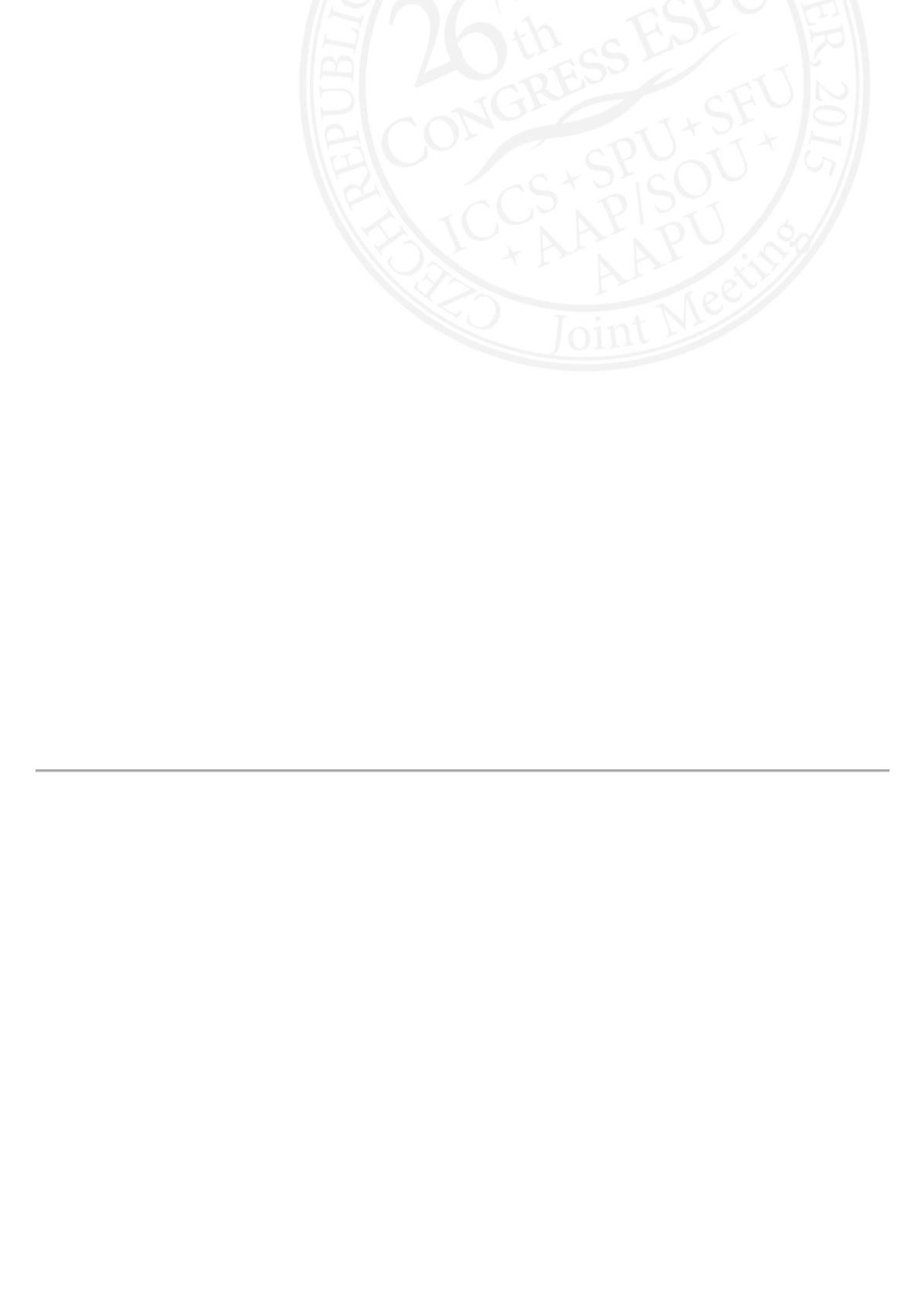

S4-14
(P)
VUR TIMING ON VCUG AS PREDICTIVE FACTOR OF VUR RESOLUTION AFTER
ENDOSCOPIC INJECTION
Jun Nyung LEE
1
, Ji Yong HA
2
, Hyun Tae KIM
1
and Sung Kwang CHUNG
1
1) SCHOOL OF MEDICINE KYUNGPOOK NATIONAL UNIVERSITY, UROLOGY, Daegu, KOREA (REPUBLIC OF) - 2) School of
medicine, Keimyung university, Urology, Daegu, KOREA (REPUBLIC OF)
PURPOSE
In children with vesicoureteral reflux (VUR), the identification of reflux is made during either the filling or voiding phase
of the voiding cystourethrogram (VCUG). The timing of VUR on VCUG is known as a predictive factor of spontaneous
resolution in VUR children. We assess the effect of VUR timing on the radiologic outcome after endoscopic
dextranomer/hyaluronic acid copolymer injection for VUR.
MATERIAL AND METHODS
We retrospectively reviewed the medical records of 94 VUR patients (136 ureters) who underwent endoscopic
dextranomer/hyaluronic acid copolymer injection as initial surgical management at our institution between May 2006
and December 2013. Radiologic success was defined as grade I or less on VCUG at 3-6months after endoscopic
injection. We allocated patients to a filling reflux group or a voiding reflux group on the basis of the most recent
preoperative VCUG. We evaluated patient demographics and outcomes after endoscopic injection according to VUR
timing. Predictive factors for persistent VUR were analyzed in a multivariate logistic regression model.
RESULTS
Of the 94 children (136 ureters), 68 (101 ureters) were allocated to the filling reflux group and 26 (35 ureters) were
allocated to the filling reflux group. Preoperative VUR grade in filling reflux group was significantly higher than that in
voiding reflux group (p = 0.001). The radiologic success was observed 56.44% (57/101 ureteral units) in the filling
reflux group and 88.57% (31/35 ureteral units) in the voiding reflux group (p = 0.001). Multivariate analysis showed
that higher VUR grade (grade≥IV) and filling reflux on VCUG were predictive factors of persistent VUR after endoscopic
surgery (p = 0.001 and p = 0.005).
CONCLUSIONS
VUR timing on preoperative VCUG was found to be an independent predictive factor of VUR resolution after endoscopic
injection. Our findings indicate that VUR timing should be considered a priority in the management of VUR patients who
needed surgical intervention.












